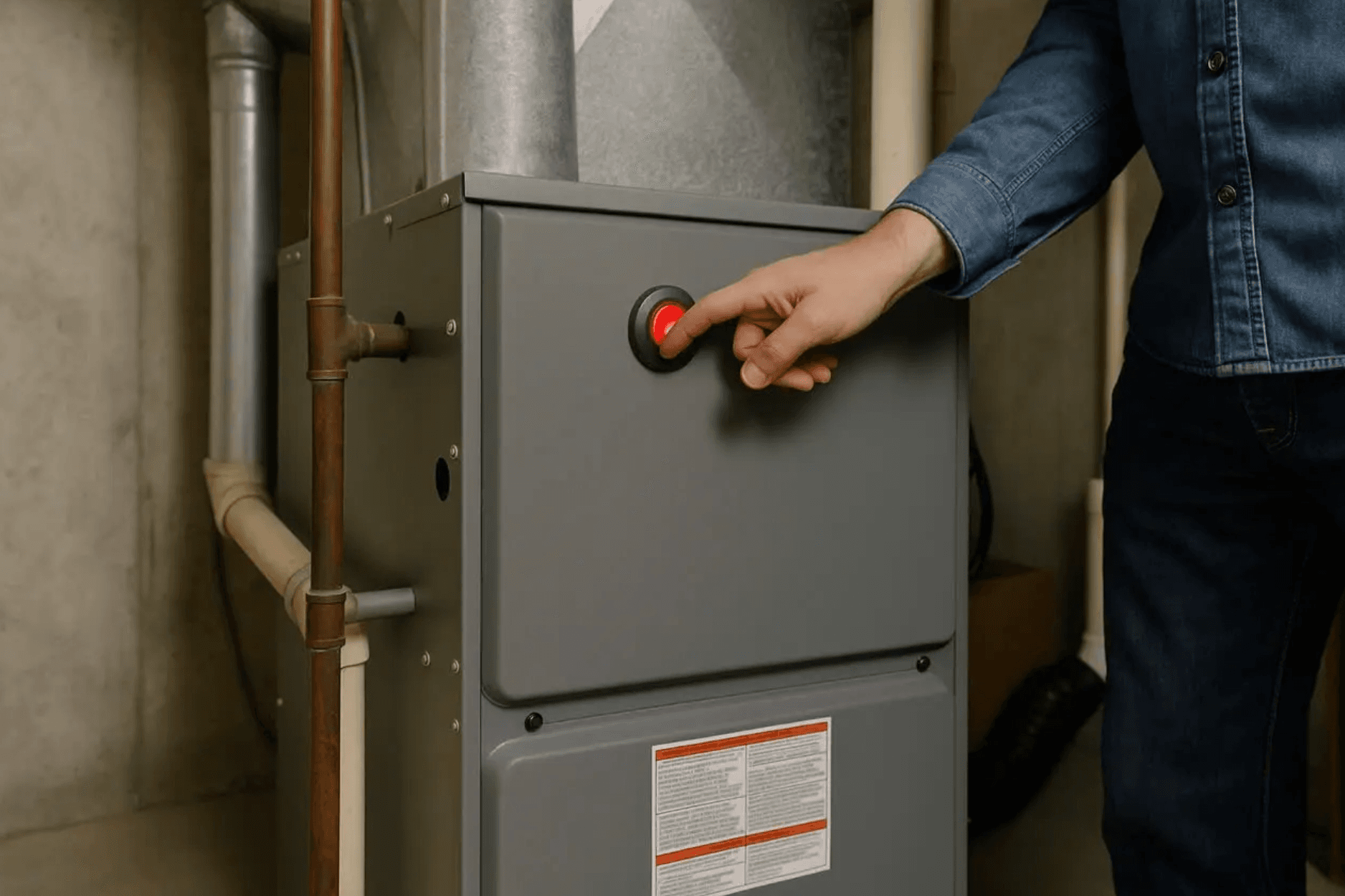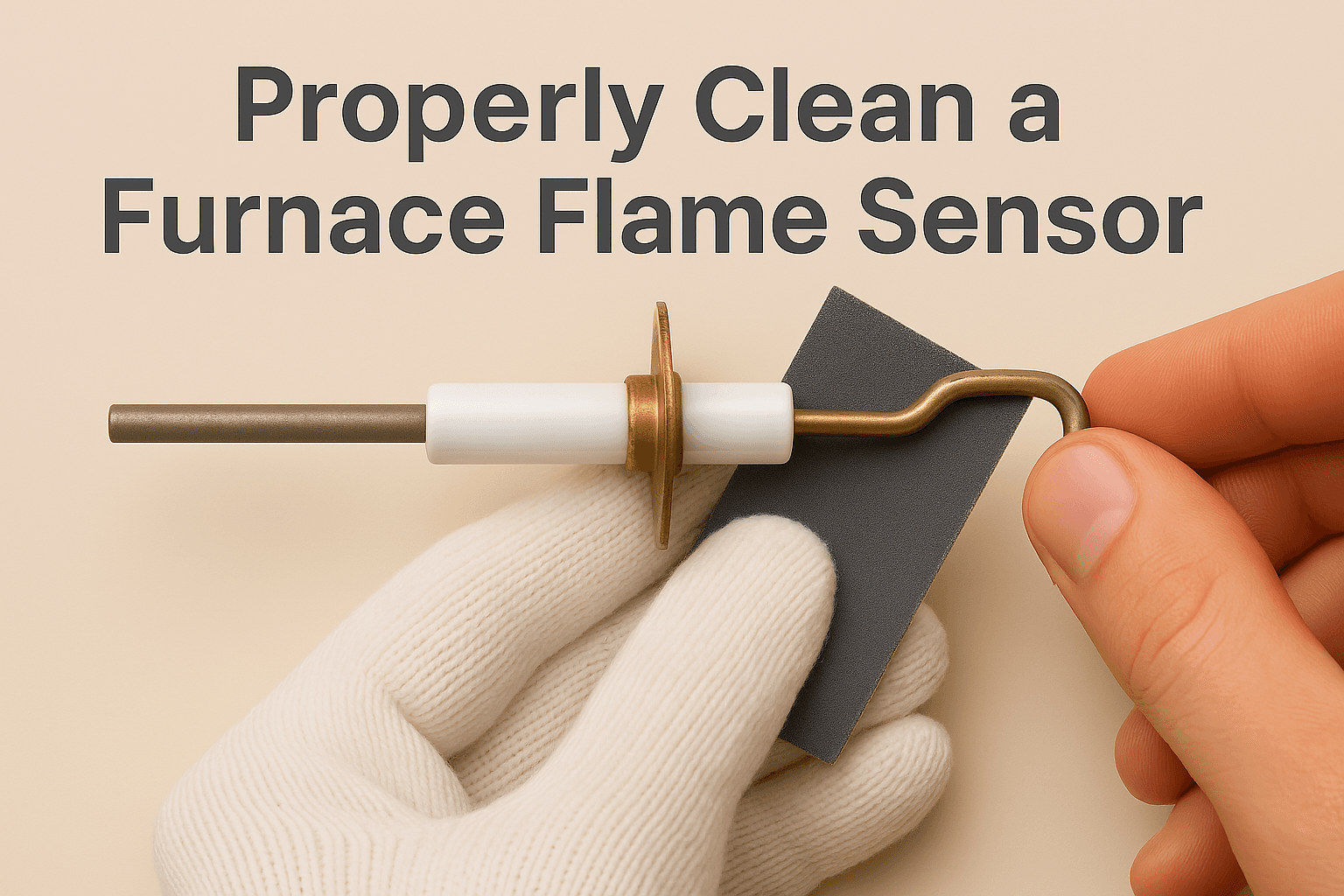How-To Guides
How to Test a Furnace Flame Sensor with a Multimeter?
AZparts Team
Updated on November 17, 2025
10 min read
If your furnace keeps shutting off or fails to ignite properly, a faulty flame sensor might be the cause. Many homeowners ask, how do you test a flame sensor to confirm if it’s working correctly? Using a multimeter, you can quickly check the sensor’s performance and determine whether cleaning or replacement is needed. In this guide, AZParts will walk you through each step to help you troubleshoot safely and effectively.

1. What is a flame sensor? What does a flame sensor do?
A furnace flame sensor is a small but essential safety device used in gas-powered furnaces. Its primary role is to detect whether a flame is present after the gas valve opens during each heating cycle. The location of flame sensor on furnace usually near the burner and activates the moment ignition is expected. When a flame is properly ignited, the sensor sends a signal confirming its presence to the furnace control board.

A furnace flame sensor is a small but essential safety device used in gas-powered furnaces (Source: AZParts)
If the sensor does not detect a flame within a few seconds, it alerts the control board to shut off the gas valve immediately. This protective response prevents unburned gas from accumulating inside the furnace, which could lead to hazardous conditions such as fire or explosion. By verifying flame presence every time the system starts, the furnace flame sensor ensures both safety and efficient operation.
2. How to test a flame sensor?
To properly test a flame sensor, you need to follow a few careful steps to ensure accuracy and safety. Each step plays an essential role in diagnosing whether the sensor is functioning as it should. Here’s how to do it:
2.1. Step 1: Turn of the furnace
Start by switching off power to the furnace at the main breaker or the furnace’s own power switch. This is a crucial safety measure to prevent electrical shock or accidental activation during inspection. Always ensure the furnace is completely off before moving on to the next step.

Cut off power to the furnace at the main breaker (Source: AZParts)
2.2. Step 2: Locate and remove the flame sensor
After the furnace is safely powered down, open the access panel to locate the flame sensor. It is usually a thin metal rod positioned near the burner assembly. Carefully disconnect the wire attached to it, then unscrew and remove the sensor from its mounting bracket. Take note of how it’s positioned so you can reinstall it correctly later.

Open the access panel to locate the flame sensor (Source: AZParts)
2.3. Step 3:Test the Sensor Using a Multimeter
To check if the flame sensor is working, set your multimeter to the resistance (ohms) setting. Touch one probe to the metal rod and the other to the terminal where the wire connects. A properly functioning flame sensor should show very little resistance. If the reading is very high or shows no continuity, the sensor may be faulty and require replacement.

Set your multimeter to the resistance (ohms) setting and test the sensor (Source: AZParts)
2.4. Step 4: Clean the flame sensor
Even if the sensor shows signs of life, dirt or carbon buildup can cause it to malfunction. Use a fine-grit sandpaper or emery cloth to gently clean the metal rod. Remove all soot or residue without scratching the surface too harshly. After cleaning, wipe it with a dry cloth and reinstall it in the same position. This simple cleaning often restores proper function without needing a new sensor.

Let’s use a fine-grit sandpaper or emery cloth to gently clean the metal rod (Source: AZParts)
3. How to clean a furnace flame sensor unit
Over time, a furnace flame sensor can accumulate dirt, soot, or oxidation that prevents it from detecting the flame properly. This buildup may cause the furnace to shut down prematurely or fail to start. Cleaning the sensor is a simple but important maintenance task that can restore normal operation without needing a replacement.
_1749463107.jpg)
Cleaning the sensor is a simple but important maintenance task (Source: AZParts)
3.1. Tools and Materials Needed
Before you begin, you should gather the necessary tools and materials. These items will help you clean the sensor safely and effectively without damaging its surface.
- Screwdriver: You will need a Phillips or flathead screwdriver to remove the access panel and unscrew the flame sensor.
- Fine-grit sandpaper or emery cloth: Use this to gently scrub the metal rod of the flame sensor and remove carbon buildup.
- Soft cloth or paper towel: This is helpful for wiping away loosened debris and cleaning the sensor housing.
- Gloves and safety glasses: These provide protection when handling sharp components or working near electrical parts.

You should gather the necessary tools like a screwdriver, fine-grit, soft cloth, paper towel, gloves and safety glasses (Source: AZParts)
3.2. Step-by-Step Flame Sensor Cleaning Process
Cleaning a flame sensor takes only a few minutes, but it requires care and attention to detail. Follow each of the steps below to complete the process safely.
- Turn off the furnace power: Before touching any internal components, make sure to shut off the power to the furnace using the switch near the unit or the circuit breaker. This will prevent accidental electrical shock during the cleaning.
- Locate and remove the flame sensor: Open the furnace access panel using your screwdriver. The flame sensor is typically a thin metal rod positioned near the burner. Unscrew it gently from the bracket and pull it out carefully.
- Gently clean the metal rod: Use your fine-grit sandpaper or emery cloth to scrub the metal rod lightly. Focus on removing visible soot or corrosion, but avoid using too much pressure. A few firm strokes should be enough to restore its conductivity.
- Wipe off debris and reinstall the sensor: After sanding, use a soft cloth to wipe away any remaining dust or particles. Then insert the cleaned flame sensor back into its bracket and tighten the screw securely.
- Restore power and test the furnace: Once the sensor is reinstalled, close the access panel and switch the furnace power back on. Turn up the thermostat and observe whether the furnace ignites and runs continuously.

After cleaning, let’s insert the cleaned flame sensor back into its bracket and tighten the screw securely (Source: AZParts)
4. When Should You Contact a Professional?
You should contact a professional when basic maintenance does not resolve the problem with your furnace. If your furnace continues to shut off unexpectedly or fails to ignite after cleaning or flame sensor testing, there may be deeper electrical or mechanical issues that require expert attention. A licensed technician can diagnose the problem accurately and ensure all components function safely and efficiently.

If your furnace continues to shut off, there may be deeper electrical or mechanical issues that require expert attention (Source: AZParts)
Additionally, if you feel unsure or uncomfortable handling electrical components—such as when learning how to test flame sensor—it is always safer to call a professional. Incorrect handling may damage the system or create safety hazards. Professional service not only protects your equipment but also gives you peace of mind that the repair has been done properly.
5. Is It Possible to Repair a Faulty Furnace Flame Sensor?
Yes, it is possible to repair a bad furnace flame sensor, but the repair often depends on the extent of the damage. In many cases, a malfunctioning flame sensor simply needs a thorough cleaning to remove carbon buildup or residue that interferes with its ability to detect a flame. If cleaning restores proper function, there is no need for replacement.
However, if the sensor is physically damaged, corroded, or still fails after cleaning and testing, replacement is usually the best option. Flame sensors are relatively inexpensive and easy to replace, making it a cost-effective solution. Attempting to repair a severely damaged sensor is not recommended, as it may compromise the safety and reliability of your furnace system.

In many cases, replacement is usually the best option (Source: AZParts)
You can explore reliable replacement options from AZParts to restore safe and efficient operation:
- The 0130F00010 Furnace Flame Sensor: This high-quality replacement part of furnace is designed for Goodman and Amana furnaces. It replaces multiple part numbers, including B1172606, B11726-06, and P1257001F. Built for durability and performance, it ensures your heating system runs safely and efficiently.

The 0130F00010 Furnace Flame Sensor is a high-quality replacement part designed to fit Goodman and Amana furnaces (Source: AZParts)
- 69W43 Furnace Flame Sensor: Upgrade your heating system with the 69W43 Furnace Flame Sensor, compatible with Lennox, Armstrong, and Ducane furnaces. Designed to replace 69W4301, LB-74940B, and LB74940B, this reliable sensor ensures optimal performance and safety for your furnace, helping maintain efficient heating in your home.

The 69W43 Furnace Flame Sensor compatible with Lennox, Armstrong, and Ducane furnaces (Source: AZParts)
- 62-23543-01 Furnace Flame Sensor – Pack of 4: Ideal for residential or commercial setups, this four-pack provides excellent value and compatibility with a wide range of Rheem-related systems. Each sensor promotes consistent ignition and long-term safety.

62-23543-01 Furnace Flame Sensor - Pack of 4 compatible with Rheem, Ruud, WeatherKing, Thermal Zone, and DuroGuard models (Source: AZParts)
Testing your flame sensor on furnace with a multimeter is a simple but vital step in maintaining a safe and functional heating system. If your sensor shows no continuity or still doesn’t work after cleaning, it’s time for a replacement. At AZParts, we provide reliable flame sensor parts that match your furnace model and restore performance. Shop furnace part with AZParts today to keep your home warm and safe all season long.
6. FAQ about flame sensor testing
6.1. How do I know if my flame sensor is bad?
If your furnace lights then shuts off after a few seconds, the flame sensor may be dirty or faulty. Other signs include short cycling or the pilot light not staying lit.
6.2. How many ohms should a flame sensor be?
A flame sensor should show close to 0 ohms (continuity), but it’s better tested by current — a good sensor produces 2–6 µA DC when the flame is on.
6.3. What voltage should a flame sensor read?
The sensor circuit typically has 90–120V AC, while the return signal is a small DC microamp current (2–6 µA) confirming the flame.
Contact Information:
8 The Green, Ste A, Dover, Delaware 19901-3618, United States
Furnace
Further Reading
Further Reading





